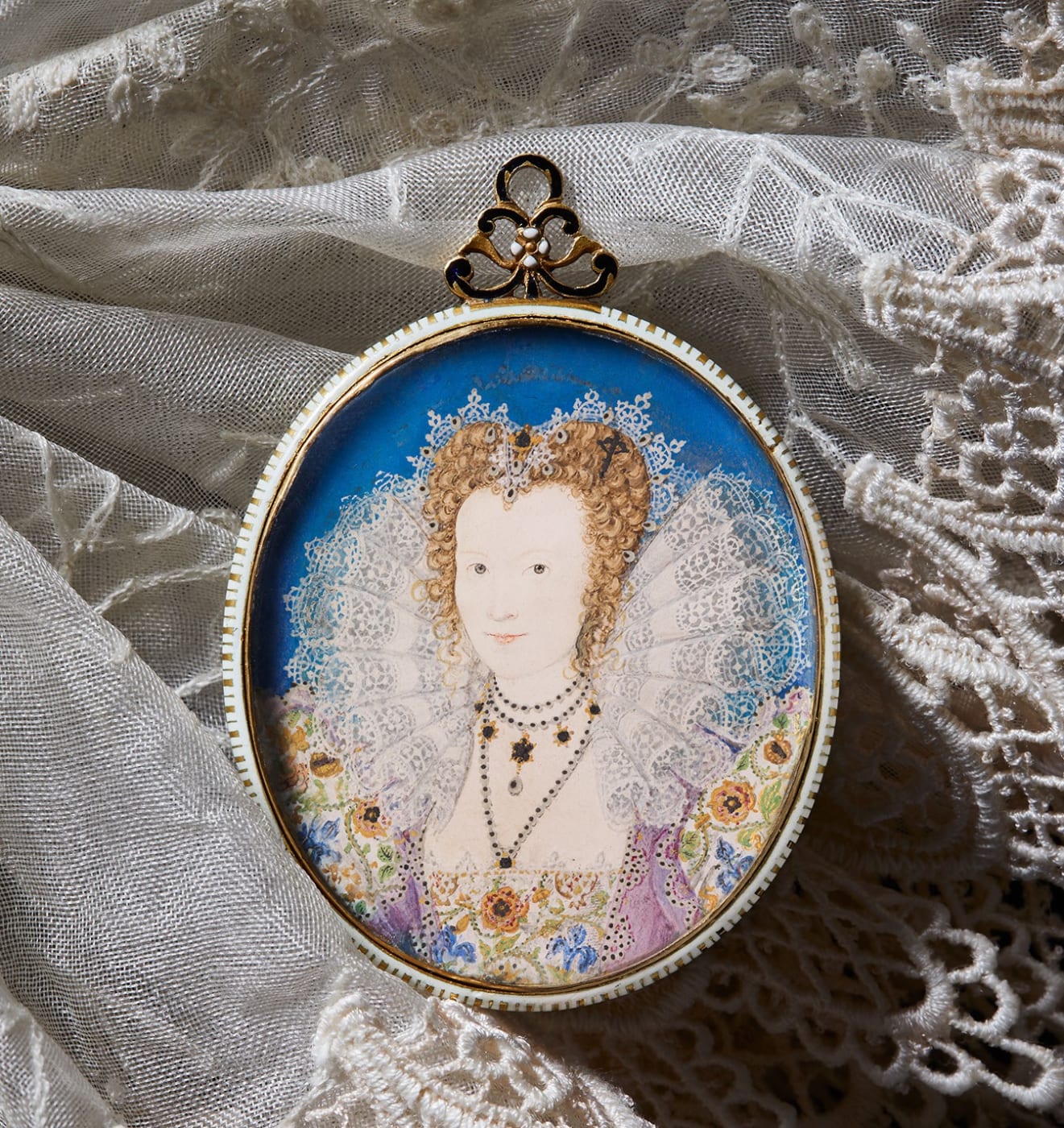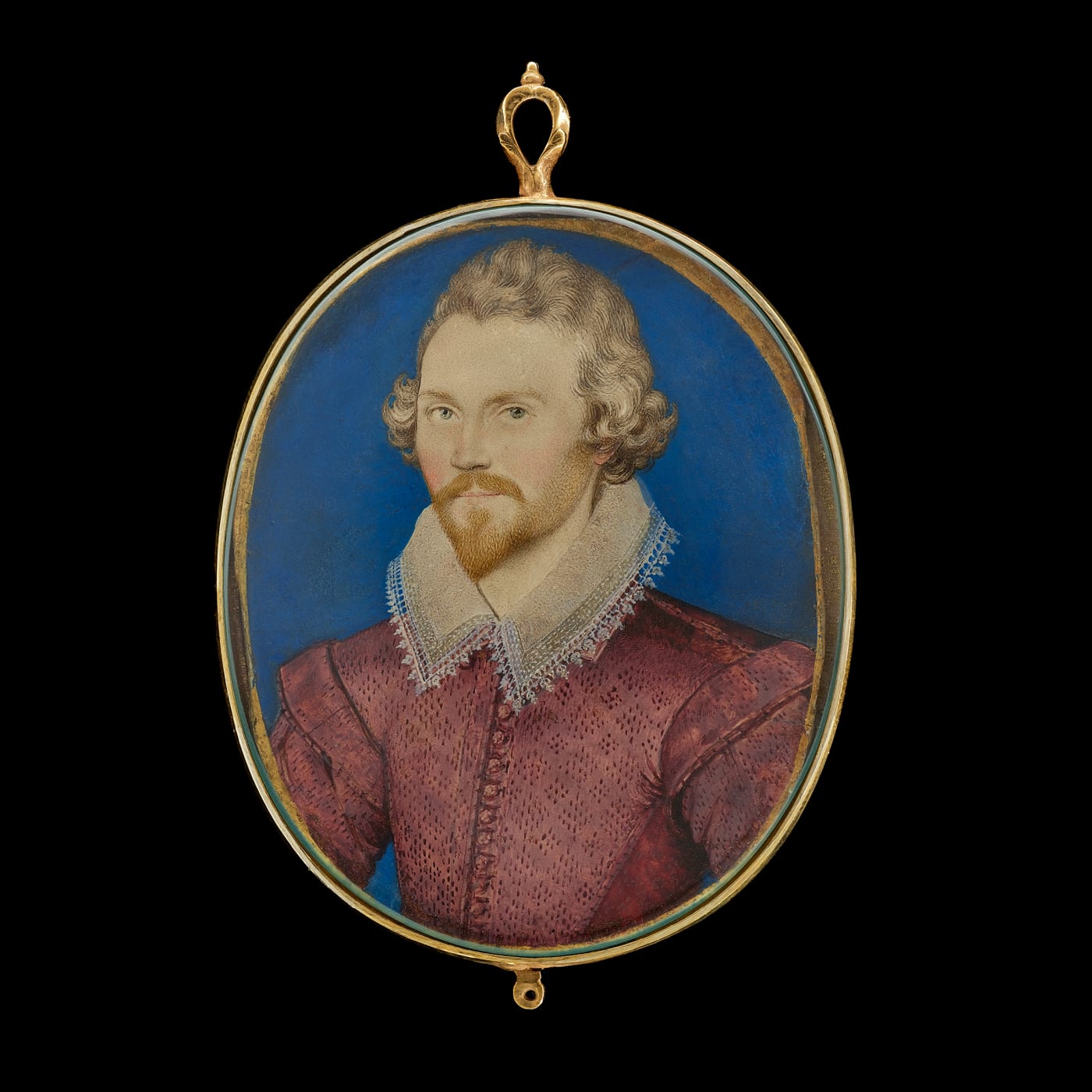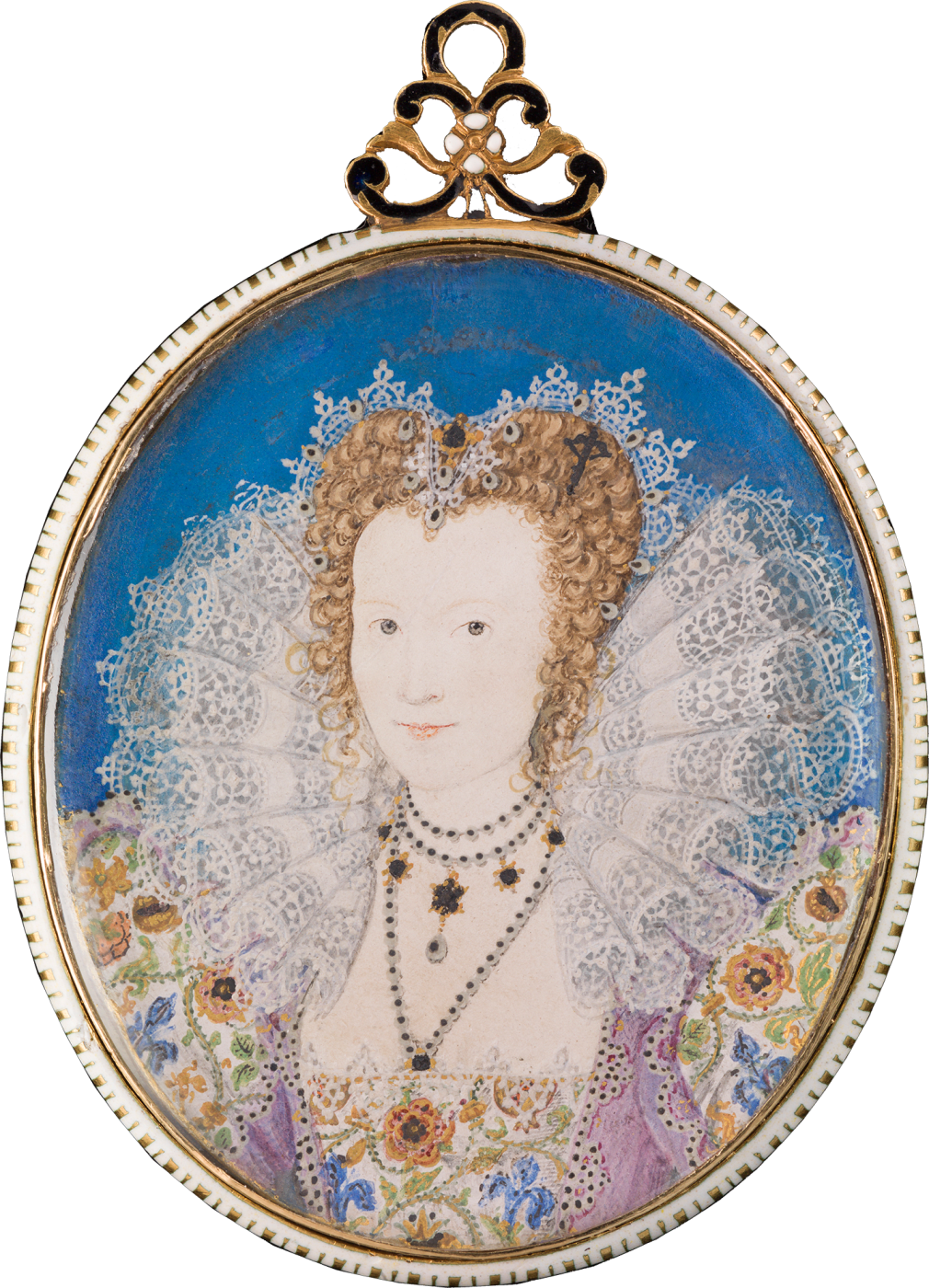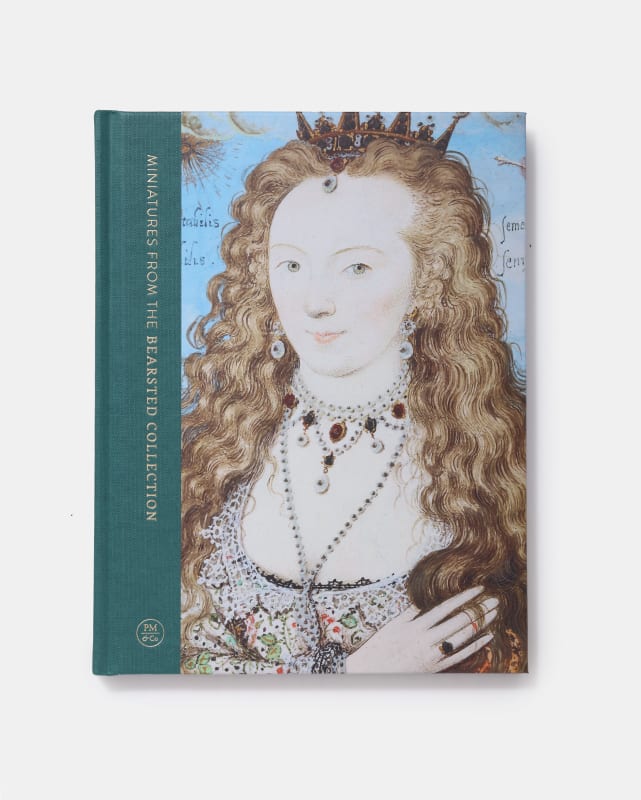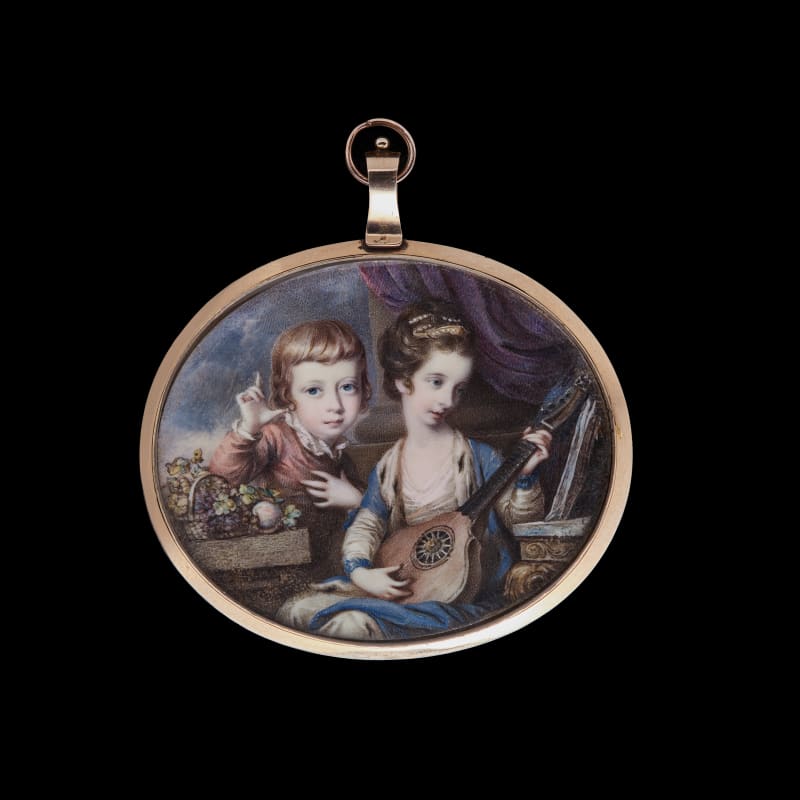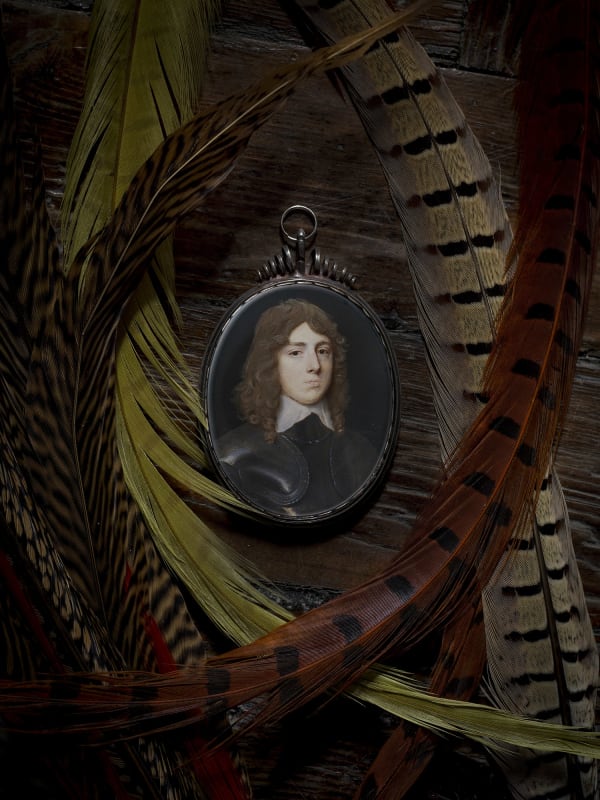Full Biography
There are few artists whose work can seem to define the self-image of an entire age. Nicholas Hilliard was one such portrait miniature artist.
Born in Exeter, Nicholas Hilliard was the son of Richard Hilliard (c.1519-94), a goldsmith. Hilliard the elder was a staunch Protestant and, following the accession of the Catholic Queen Mary (1516-58), he decided to send his son abroad for his safety. Thus, in 1557 Hilliard left in the train of John Bodley (c.1520-91) – a wealthy Essex merchant – to go to Geneva, a bastion of Protestantism. He travelled via Germany where he might have had his first exposure to the works of Albrecht Dürer (1471-1528), whom Hilliard considered the most ‘exquisite and perfect a Painter, and Master in the art of Grauing on Copper as euer was since the world begane’.[1]
After Mary’s decease, the Protestant succession was restored with the coronation of Queen Elizabeth I (1533-1603) in 1558. By 1559, the Bodleys had returned to England, moving to London with Hilliard in tow. On 13th November 1562, Hilliard was admitted into the household of his master, Robert Brandon (d.1591), goldsmith and jeweller to Queen Elizabeth I. Through Brandon, Hilliard gained two introductions that were to be of to be of lifechanging significance: the first was to his future wife, Alice (c.1556-1611?), Robert’s third surviving child; the second was to Queen Elizabeth herself. It is likely that Hilliard first encountered Elizabeth when working as Brandon’s assistant, and was formally presented to her when he had first begun to show his skill as a limner [1] (the sixteenth-century term for painting in miniature).
There are few artists whose work can seem to define the self-image of an entire age. Nicholas Hilliard was one such portrait miniature artist.
Born in Essex, Nicholas Hilliard was the son of Richard Hilliard (c.1519-94), a goldsmith. Hilliard the elder was a staunch Protestant and, following the accession of the Catholic Queen Mary (1516-58), he decided to send his son abroad for his safety. Thus, in 1557 Hilliard left in the train of John Bodley (c.1520-91) – a wealthy Essex merchant – to go to Geneva, a bastion of Protestantism. He travelled via Germany where he might have had his first exposure to the works of Albrecht Dürer (1471-1528), whom Hilliard considered the most ‘exquisite and perfect a Painter, and Master in the art of Grauing on Copper as euer was since the world begane’.[1]
After Mary’s decease, the Protestant succession was restored with the coronation of Queen Elizabeth I (1533-1603) in 1558. By 1559, the Bodleys had returned to England, moving to London with Hilliard in tow. On 13th November 1562, Hilliard was admitted into the household of his master, Robert Brandon (d.1591), goldsmith and jeweller to Queen Elizabeth I. Through Brandon, Hilliard gained two introductions that were to be of to be of lifechanging significance: the first was to his future wife, Alice (c.1556-1611?), Robert’s third surviving child; the second was to Queen Elizabeth herself. It is likely that Hilliard first encountered Elizabeth when working as Brandon’s assistant, and was formally presented to her when he had first begun to show his skill as a limner [1] (the sixteenth-century term for painting in miniature).
In the early 1570s, Hilliard found a champion in Robert Dudley, Earl of Leicester (1532/3–88). As Elizabeth’s favourite, he was a powerful and influential figure at court and it was likely through him that Hilliard received his first royal commission, which survives in the form of a portrait of Elizabeth dated to 1572 [National Portrait Gallery, London, inv. no.108]. But Elizabeth was ungenerous in her spending on art and Hilliard, perhaps sensing an opportunity to capitalise on his fluent command of the French language, which he had almost certainly acquired during his time in Geneva, went to France in the train of the English ambassador, Amias Paulet (c.1532-1588). Having been engaged as the valet de la garde robe to Francois-Hercule de Valois, duc d’Alencon and d’Anjou (1555-1584) – Elizabeth’s on-off suitor – he found himself working at the very highest echelons of the French court, painting distinguished figures that included Anjou himself and his brother, King Henri III (1551-89).[2]
Hilliard learned much during his time in France and was able to convert it to his professional advantage upon his return to Britain (sometime around the close of 1578). His miniatures, for instance, transitioned from a circular to an oval format – as was preferred in France. Over the course of the 1580s, despite not being granted the vacant position of Serjeant Painter as he had hoped, Hilliard became ‘the queen’s – and England’s – leading practitioner of the visual arts’.[3] As well as painting the Queen in works such as The Pelican[2] Portrait, during these years Nicholas Hilliard painted[3] likenesses of many of the most celebrated figures of the Elizabethan court, including Sir Francis Drake (1540-96) in 1581, Sir Walter Raleigh (1554-1618) in 1585 and The[4] Countess of Pembroke (1561-1621) in 1590. In 1584, moreover, he was commissioned to design the second great seal of the realm, much to the chagrin of the engravers who might more usually have expected to have been awarded this prestigious – and potentially lucrative – commission.
But no matter how hard he worked for his royal patron, Hilliard was never well paid by Elizabeth. The Queen and her ministers did their best to make promises of remuneration that they were not actually obliged to realise. And, around the end of the 1580s, Hilliard began to face competition. His erstwhile pupil, Isaac[5] Oliver had begun to work as an independent miniaturist in his own right, and his talent – on par to that of Hilliard – stood to lose Hilliard private commissions. Likely in response, Hilliard developed the “cabinet miniature” format, which showed his sitters at full length and occupying naturalistic spaces; an example of these works is the famed ‘Young Man among Roses’ c. 1587 (V&A inv. no. P.163-1910).
In 1591, Hilliard was commissioned to design the third great seal of the realm (Elizabeth had never fully accepted his first effort). The commission proved extremely difficult and occupied much of Hilliard’s time, allowing Oliver to secure commissions that he might otherwise have taken. Nevertheless, this period saw Hilliard finally – likely thanks to lobbying by Sir Robert Cecil – given a secure grant of royal remuneration. He was given an annuity of £40 per annum and made the goldsmith and limner to the monarch.
Following the death of Elizabeth in 1603 and the subsequent accession of James I (1566-1625), Hilliard managed to retain his position. In the years that followed, his style continued to evolve, with Hilliard introducing red velvet curtains, for instance, into the backgrounds of many of his works (a feature that debuted in a portrait of the king). A selection of Hilliard miniatures for sale are included in our artworks section below. His relationship with Oliver stabilised, moreover, with the younger man’s appointment as limner to James’s wife, Queen Anne of Denmark (1574-1619) but not to the king, a sign of how the two artists had carved out independent roles, no longer needing to work in direct competition.
Hilliard’s final decade was not an easy one, however. His wife, Alice Hilliard (nee Brandon), predeceased him and Hilliard, who had never been financially prudent, came under renewed pecuniary strain following the death of his patron, Sir Robert Cecil, 1st Earl of Salisbury (1563-1612). One creditor – to whom he owed the large sum of £40 (equivalent to his royal annuity) accused him, not unjustly, of using his reputation as security against his debts. He successfully sued Hilliard so that in 1617 – at the then-advanced age of seventy – he was thrown into prison.[4] An old friend of his from his days in France, Francis Bacon, Baron Verulam (1561-1626), heard of Hilliard’s plight and sent £11 for ‘old Mr Hilliard’ shortly following his release in 1618[5] but by now Hilliard had likely entered into his final illness. He died in January, 1619 and was buried at the Church of St Martin’s-in-the-Fields.
Philip Mould & Company have been acquiring Nicholas Hilliard artworks for the 30 years. The gallery has been able to acquire and sell important and significant works by Hilliard including the fantastic Portrait Miniature of Elizabeth I and A Portrait Miniature of a Lady of the Tudor Court.
